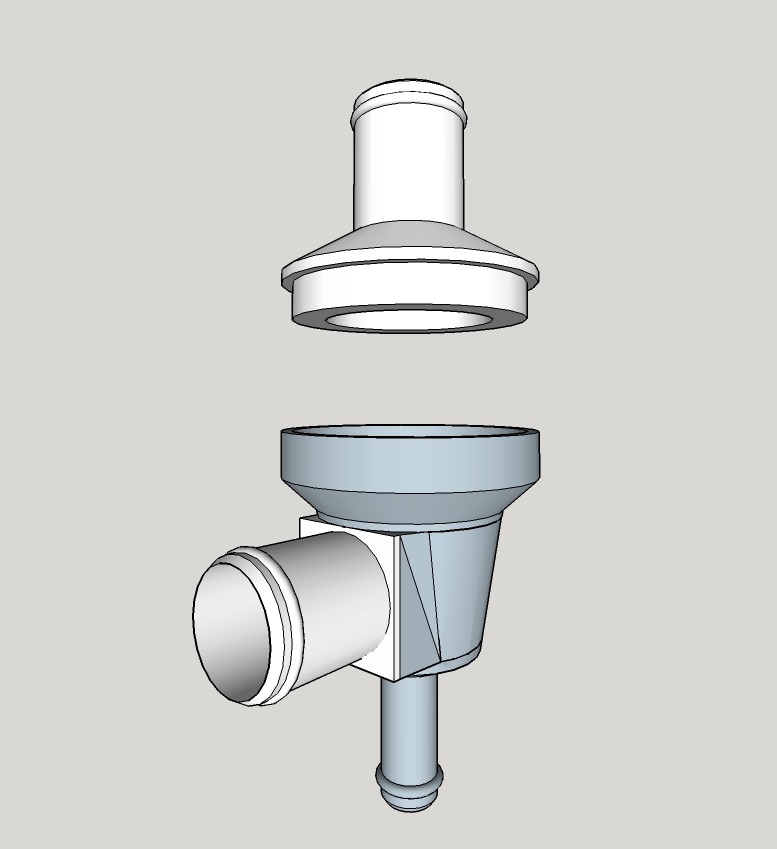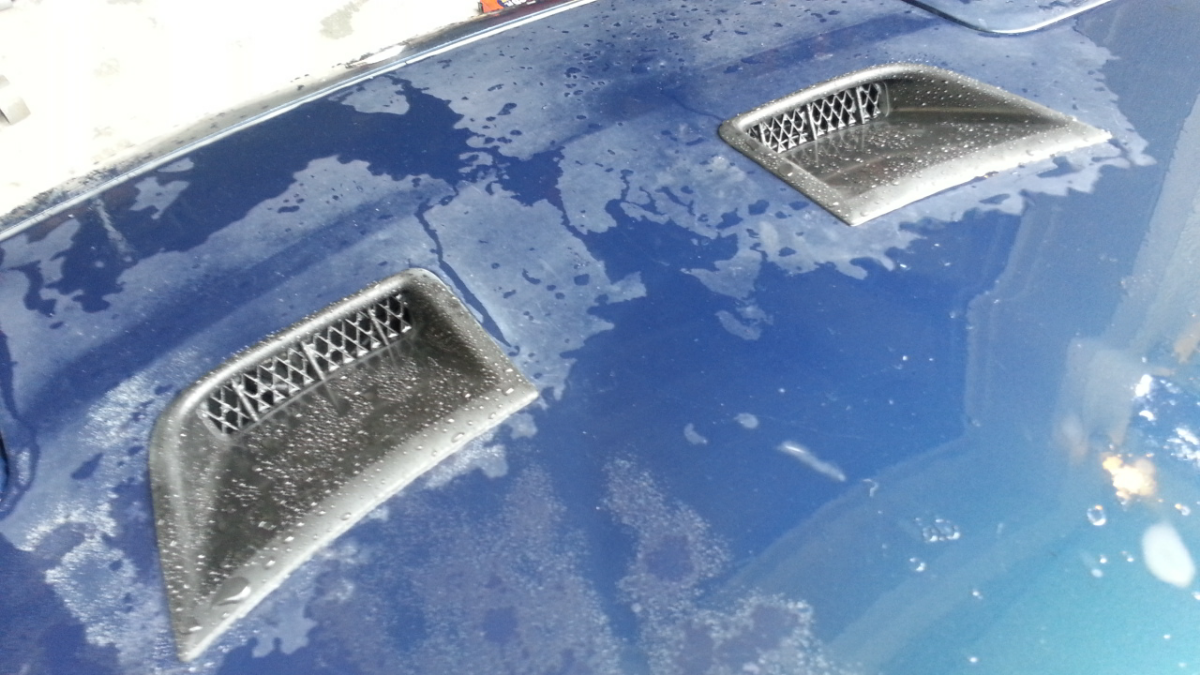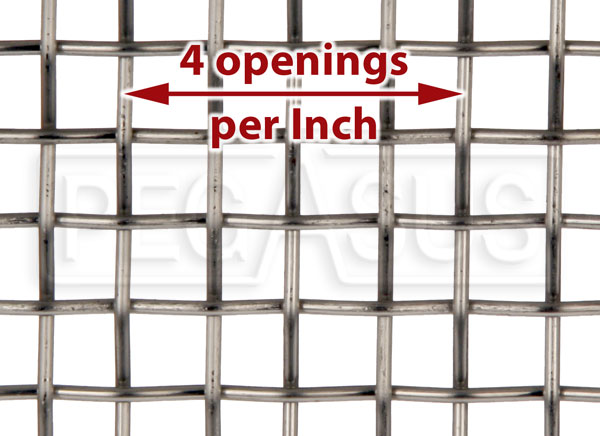Miata cooling system thread
#21
What's the consensus on the stock oil cooler and stock tb usage. Are those that don't have separate oil coolers still using the filter sandwich plate and the tb coolant lines?
I've got mine setup now with just a bypass from the oil filter cooler sandwich plate directly to the water neck/thermo housing.
I've got mine setup now with just a bypass from the oil filter cooler sandwich plate directly to the water neck/thermo housing.
#22
This is a question for an oil cooler thread. that we're drafting.
I think you mean the oil warmer. That giblet does nothing to reduce oil temps. Not a single track car in our shop has one. We typically use a Mocal thermostat sandwich plate and generic Chinese temp sender plate (Glow-shift, Greddy, etc)) stacked. TB coolant lines always capped off.
I think you mean the oil warmer. That giblet does nothing to reduce oil temps. Not a single track car in our shop has one. We typically use a Mocal thermostat sandwich plate and generic Chinese temp sender plate (Glow-shift, Greddy, etc)) stacked. TB coolant lines always capped off.

Keep up the good work, its nice to see this stuff aggregated and verified with real world data. You just saved me a ton of time and questions, and I wait with bated breath for the oil cooler thread. We can all sit here and bench race all day, but getting solid info from people with actual experience is priceless.
This thread feels sticky...
#23
Joined: Oct 2013
Posts: 520
Total Cats: 27
From: Goleta, Southern California
I feel sticky as well. Never could figure out why a splitter running to the axle centerline was the thing to do. Pressure in the engine bay clears is up.
I've heard of 80's f-bodies over heating if the little parking stop scraper get ripped off. From the info in this thread looks like Miata's are border line in the flow through the heat exchangers as well. Looks like ducting makes all the diiferance.
Thanks Emilio for the write up. Very helpfull to find a ton of good info that's been proven in the first post.
I've heard of 80's f-bodies over heating if the little parking stop scraper get ripped off. From the info in this thread looks like Miata's are border line in the flow through the heat exchangers as well. Looks like ducting makes all the diiferance.
Thanks Emilio for the write up. Very helpfull to find a ton of good info that's been proven in the first post.
#24
Great post that comes at the perfect time for me. I just installed a Rotrex with IC and Rotrex oil cooler in front of AC condensor and radiator on my 2002. I am seeing about 210* on street or track. I have some ducting on top and bottom only and an FM crossflow radiator and an FM oil cooler. I still have the belly pan (although chopped up on sides for IC piping)
1.) I wonder how much the FM hood vents would drop the coolant temperature? 2*, 5*, 10*???? (wishful thinking?)
2.) Please clarify for me. Are you saying the thermostat needs to be OEM with a stock ECU? The aftermarket one you mentioned shouldn't be used unless you run a standalone?
1.) I wonder how much the FM hood vents would drop the coolant temperature? 2*, 5*, 10*???? (wishful thinking?)
2.) Please clarify for me. Are you saying the thermostat needs to be OEM with a stock ECU? The aftermarket one you mentioned shouldn't be used unless you run a standalone?
Last edited by tomiboy; 07-12-2014 at 11:19 AM.
#25
I'd like to point out that my high performance 1966 Cadillac has a cross flow radiator 
Pressure maps for all three generations of Miata hood are found here: http://www.flyinmiata.com/support/in...sc/louvers.pdf

Pressure maps for all three generations of Miata hood are found here: http://www.flyinmiata.com/support/in...sc/louvers.pdf
#26
Great post that comes at the perfect time for me. I just installed a Rotrex with IC and Rotrex oil cooler in front of AC condensor and radiator on my 2002. I am seeing about 210* on street or track. I have some ducting on top and bottom only and an FM crossflow radiator and an FM oil cooler. I still have the belly pan (although chopped up on sides for IC piping)
1.) I wonder how much the FM hood vents would drop the coolant temperature? 2*, 5*, 10*???? (wishful thinking?)
2.) Please clarify for me. Are you saying the thermostat needs to be OEM with a stock ECU? The aftermarket one you mentioned shouldn't be used unless you run a standalone?
1.) I wonder how much the FM hood vents would drop the coolant temperature? 2*, 5*, 10*???? (wishful thinking?)
2.) Please clarify for me. Are you saying the thermostat needs to be OEM with a stock ECU? The aftermarket one you mentioned shouldn't be used unless you run a standalone?
Could be some underhood packaging issue with the wider LS3 V8 in the Targa car but yes, the vents pictured are not in the ideal spot for a BP.
__________________
#29
I've created a 3-d model in sketchup of an improved replacement to the m-tuned thermostat housing. I believe this would solve a TON of issues - maybe 20% cooling ability over the m-tuned reroute? I just don't know how to create an actual piece of hardware.

I designed this around a common Honda thermostat, specifically, the stant superstat 45878.

I designed this around a common Honda thermostat, specifically, the stant superstat 45878.
#30
I would have thought if the oil temp was 235 and the water temp was 200 the factory oil sandwich plate would make some positive contribution to oil cooling during operation. But using an external cooler is, of course optimal. I'm currently using both which is probably not necessary.
Today I added vents in the prescribed location in the hood.


Today I added vents in the prescribed location in the hood.
#31
Good summary. I'd add:
- a crossflow radiator's big advantage is in isolating the cap from the dynamic pressure delivered by the pump. Thus, for a given cap, a crossflow rad effectively allows the cooling system upstream of the cap to operate at a higher static pressure.
- Mazda's decision to relocate the tstat from the back of the head (FWD layout) to the front (RWD) thermodynamically kicked the Miata's cooling system in the *****. Not only is the flow distribution in the engine all fucked up, it forces the rad to work at a lower delta T (bad for effectiveness) because the coolant is essentially bypassing the engine (or, picking up very little heat from the engine before being sent to the rad). Double whammy of suckitude.
- agreed with the 'convection' corrections
- the wax valve in the throttle body is to regulate cold start idle speed
- the oil warmer is indeed better at being a warmer than a cooler. This is not to say it is a bad thing, as bringing oil up to operating temp as quickly as possible is highly desirable in cars that experience frequent cold starts (street cars). For race cars, dump it.
Once the oil and the coolant reach their respective operating temps, the oil warmer is pretty much along for the ride since the delta T is minimal, so there's little heat being exchanged.
The warmer does a modicum of oil cooling but only when your oil temps run away such that there is a significant delta T between oil and coolant temp, but in this case it's too late anyway and it's basically pissing on a forest fire. You need a proper external oil cooler in this case.
- a crossflow radiator's big advantage is in isolating the cap from the dynamic pressure delivered by the pump. Thus, for a given cap, a crossflow rad effectively allows the cooling system upstream of the cap to operate at a higher static pressure.
- Mazda's decision to relocate the tstat from the back of the head (FWD layout) to the front (RWD) thermodynamically kicked the Miata's cooling system in the *****. Not only is the flow distribution in the engine all fucked up, it forces the rad to work at a lower delta T (bad for effectiveness) because the coolant is essentially bypassing the engine (or, picking up very little heat from the engine before being sent to the rad). Double whammy of suckitude.
- agreed with the 'convection' corrections
- the wax valve in the throttle body is to regulate cold start idle speed
- the oil warmer is indeed better at being a warmer than a cooler. This is not to say it is a bad thing, as bringing oil up to operating temp as quickly as possible is highly desirable in cars that experience frequent cold starts (street cars). For race cars, dump it.
Once the oil and the coolant reach their respective operating temps, the oil warmer is pretty much along for the ride since the delta T is minimal, so there's little heat being exchanged.
The warmer does a modicum of oil cooling but only when your oil temps run away such that there is a significant delta T between oil and coolant temp, but in this case it's too late anyway and it's basically pissing on a forest fire. You need a proper external oil cooler in this case.
#36
It also interfered with the livery of the car. Yes, I'll admit to that last one - I did when I first wrote up that louver install.
A set of vents in a less than ideal (but still effective) location is better than no vents at all. The LS3 cools far better than the BP does, so this setup has shown itself to be effective.
Nice work - I like the vents. You can improve those considerably by knocking out that plastic "mesh" inside. It's cutting the size of your vents down dramatically. Even ignoring what the mesh itself does to airflow, you'd be amazed at how much area is plastic instead of holes. A medium wire mesh (6 openings per inch, 0.035" wire) has only 63% open area. Coarse mesh (4 openings per inch, 0.046" wire) is 66%. And they look much more open than what you've got here.
Sample meshes and numbers from Pegasus Auto Racing, although it's easy enough to calculate. Coarse:

#37
In our radiator testing, the MSM radiator outperformed almost everything else. It's got a different fin density than the other stock parts IIRC, and was better than typical aftermarket rads we tested. It's not in the final numbers on our site. That stock MSM rad drove us pretty hard to come up with something that clearly outperformed it.
Flyin' Miata : Cooling tech
Flyin' Miata : Cooling tech
#39
We like the Stant “SuperStat” line of thermostats provide the highest peak flow and temp reduction. The 45868 180° SuperStat fits all years 89-05 and is what we use in our coolant reroute.
http://www.rockauto.com/getimage/get...44-0&width=500
http://www.rockauto.com/getimage/get...44-0&width=500
How significant this is wrt max cooling capacity, I don't know.
#40
Re: WRX vents, the mesh snaps into them and can be easily popped out for track days. See my build thread for more pictures. https://www.miataturbo.net/build-thr...-62556/page19/
Last edited by sixshooter; 07-13-2014 at 03:07 PM.














